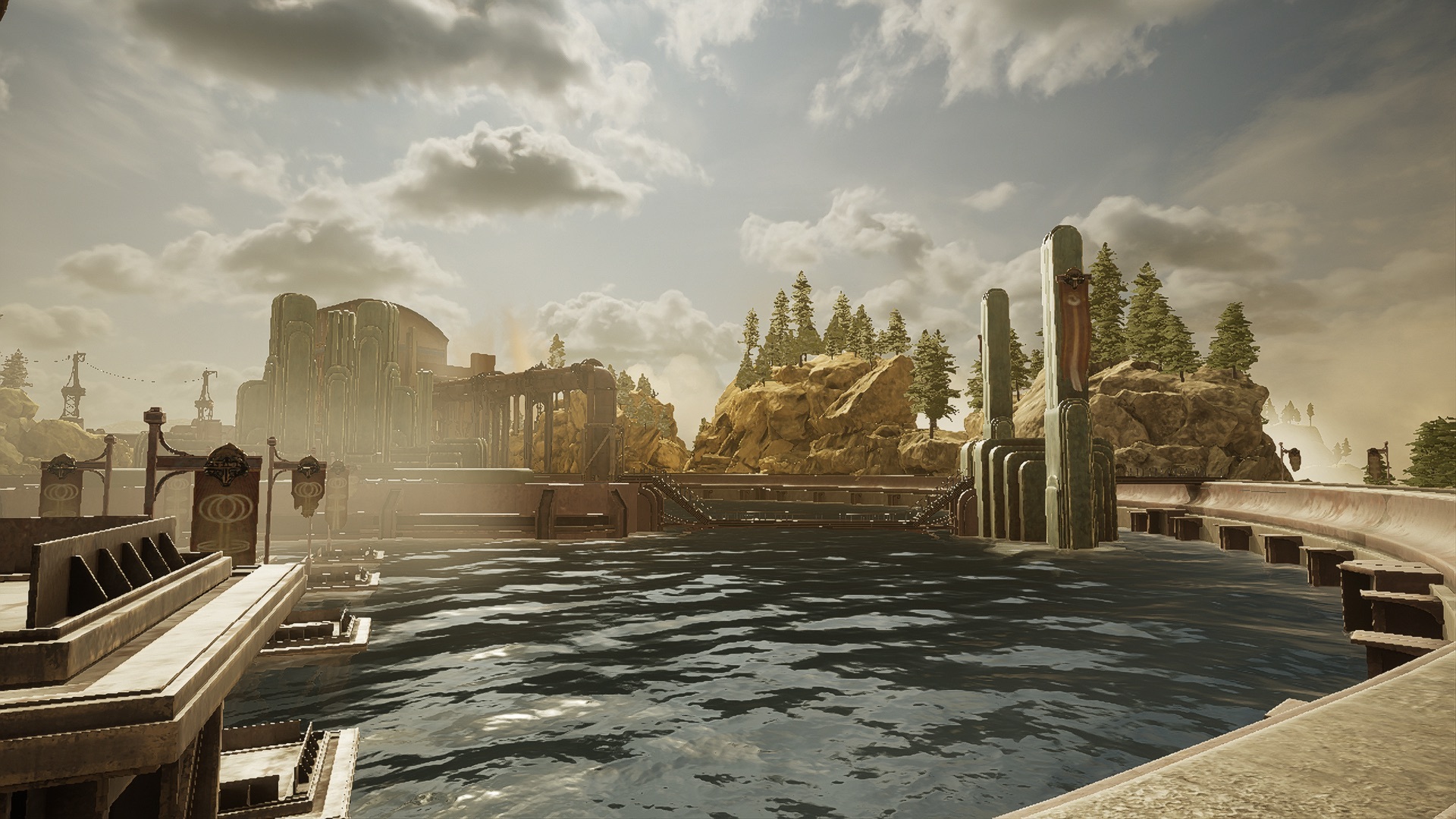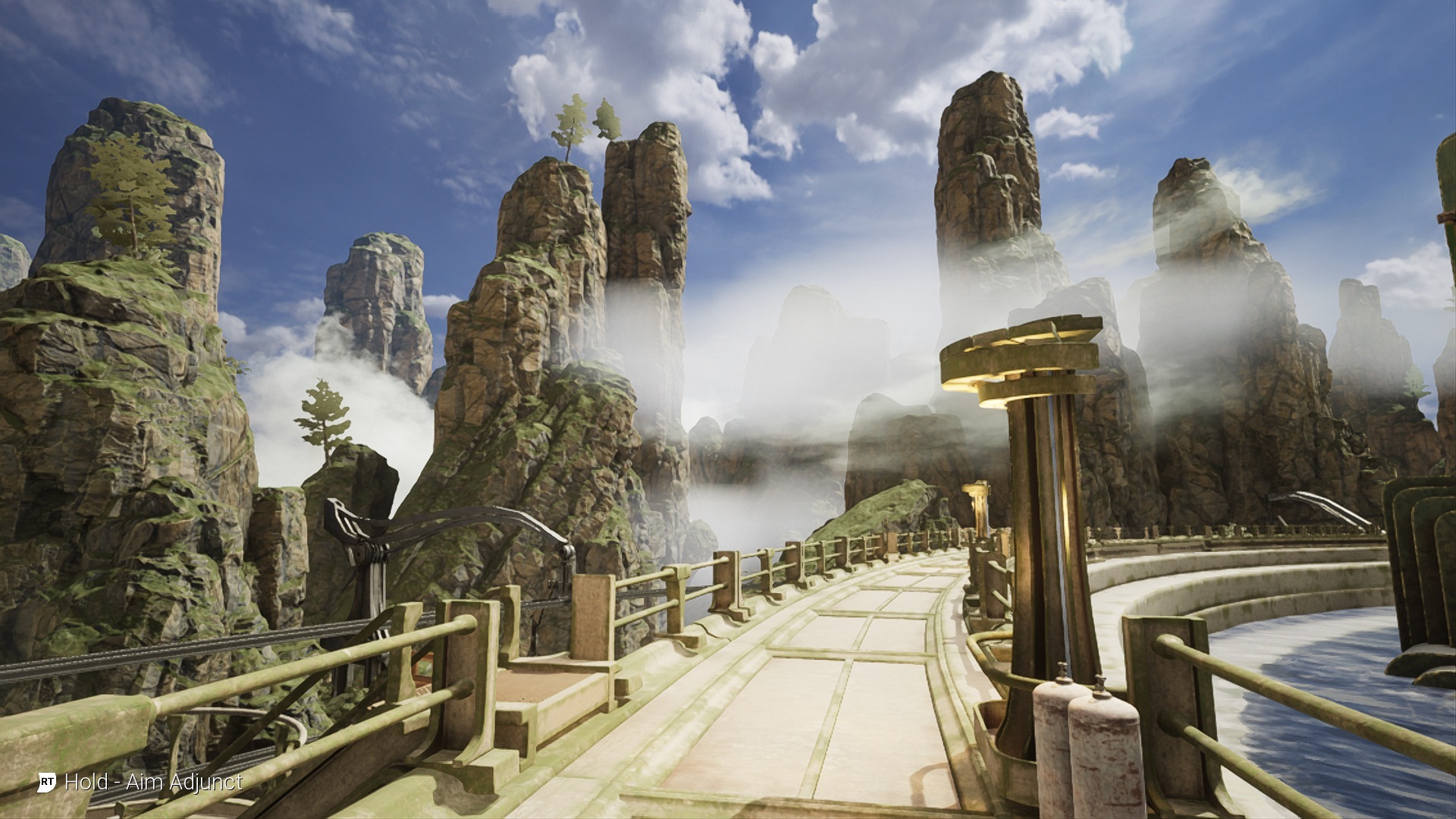iMore Verdict
Firmament marshals atmosphere, majesty, and intrigue — but all in service of puzzles that are often ponderously unpleasant.
Pros
- +
Stunning visuals
- +
Interesting story
- +
Fun, interactive gameplay
- +
Apple Silicon native
Cons
- -
Poor design robs many puzzles of their fun
- -
Occasional frame-rate slowdowns
You can always trust iMore.
Since 1993’s Myst, developer Cyan has plunged players into worlds worthy of getting lost in. At their best, Cyan’s games combine compelling stories and eerie environments with the nerdy joys of immersing yourself in a strange new place and slowly figuring out how it works. The developer’s finest puzzles arise naturally from your surroundings, and their solutions add to your understanding of the systems that govern their worlds.
Developer: Cyan Worlds
Publisher: Cyan Worlds
Genre: First-person puzzle exploration
Minimum requirements: macOS 13.3 or later
Core i5 processor (Intel) or M1 processor (Apple Silicon) or greater
16GB RAM (Intel) / 8GB RAM (Apple Silicon)
Game size: 13.4GB; requires 20GB free for installation
Play time: 16+ hours
Players: Single player
Cyan’s new title, Firmament, has a lot going for it: breathtaking visuals, a delightful aesthetic, a really fun central play mechanic, and the company’s most intriguing story in years. Unfortunately, all these graces are sporadically let down by some of the most disappointing puzzle design I’ve seen from Cyan. For the first time, playing one of its games doesn’t consistently feel like escaping to some magical new place. It sometimes feels like a job — and kind of a lousy one, at that.
Disclaimer: Though the author backed Firmament’s Kickstarter and purchased a copy of the game, we tested this title with a pre-release review copy provided by Cyan.
Firmament: Story, Gameplay, and Presentation
We’re not kidding about this game’s look. Designed for VR, Firmament’s worlds have a sense of scale, especially vertically, that invokes true awe even in two dimensions. More than once, I stopped dead to catch my breath, drinking in some incredible new vista or massive, stunning piece of architecture. You can just hang out on a cliff amid falling snow, watching wisps of cloud drift past distant sunlit peaks — and you’ll absolutely want to. It’s just that pretty.

Cyan’s previous game, Obduction, had similarly gorgeous environments undone by a damp squib of a story — an overly complex saga of warring alien races and dimensional shifts that somehow made less and less sense as it went along. Firmament’s story is simple but compelling, enlivened with shrewd environmental storytelling. You can’t necessarily glean answers from the places you explore, but you can start to ask yourself a lot of truly compelling questions.
With its brass-intensive, steampunk-deco environments, Firmament feels a lot like Bioshock, except, you know, pleasant. Indeed, the game seems to be in an intriguing conversation with the ideals and politics of its more famous and murdery predecessor. While Irrational Games’s classic Ayn-Rand-‘em-up critiqued Objectivism and its emphasis on selfish gain at all costs, Firmament sets up a world of collaborative workers who shun avarice to pursue a mysterious common goal. Considering that you’re released from cryogenic sleep with your memory wiped to find their labors abandoned and in disrepair, things presumably didn’t go too well.
Upon waking from your frosty nap, you’re greeted by a sort of digital ghost known only as Mentor — and literally the second thing she tells you is that she’s going to lie to you. That’s an intriguing hook for a character, and a fun callback to Myst’s notoriously unreliable narrators.
iMore offers spot-on advice and guidance from our team of experts, with decades of Apple device experience to lean on. Learn more with iMore!
Mentor is a young, entirely over-it French woman, and her personality gives the game just the right touch of humor.
Mentor is a young, entirely over-it French woman, and her personality gives the game just the right touch of humor. In other games, your disembodied helper voice can’t stop giving you hints and directions about where to go or what to do next. Mentor just keeps shrugging, nonchalantly mentioning how she’ll let you figure things out for yourself, or commenting on how frustrated and confused you must feel while completely refusing to help you. That’s a bold and truly funny choice for the game — but it also feels a little like FIRMAMENT is trolling you.
Mentor wastes no time introducing you to your Adjunct, a hand-worn gadget that shoots out a plug, connected via a shimmering laser lasso, to access the functions of various sockets throughout the game world. With a few simple and intuitive controls, you can use sockets to open doors, move elevators, operate heavy machinery, and much more.
You’ll spend most of the game’s initial phase making your way through three realms — wintry Curievale, verdant St. Andrew, and rocky island Juleston — to find upgrades for the Adjunct that give it enjoyably dorky new abilities.“Concatenated socketing” never stops sounding vaguely filthy, and I’m here for it. It’s like if you actually used Bioshock’s famous pipe wrench to fix leaky plumbing. (Note: You will actually fix plumbing in this game.)
Leave it to Cyan, famously death-free and nonviolent, to pioneer the first-person tooler. The Adjunct is just a ton of fun to use, and lends FIRMAMENT a more interactive feel than the somewhat ghostly presence you occupied in Cyan’s earlier games. If only you had something more worthwhile to do with it.
Firmament has one weakness, but it’s a doozy: Too many of the puzzles, especially in the early going, aren’t great.
Firmament has one weakness, but it’s a doozy: Too many of the puzzles, especially in the early going, aren’t great. The first one gives you all the tools and visual clues you need right in one place, and coalesces in the kind of intuitive leap of logic that makes games like this feel so rewarding. But from there, the game frequently becomes a slog — a tedious series of trial-and-error endurance tests that have you running back and forth, over and over, with a lot of eyeballing and guesswork.
Cyan’s previous puzzles made sense in the context of their environments. These were ramshackle places, the lonely strongholds of an isolated few, suspicious of outsiders. Even Obduction’s most gleefully fiendish series of pure puzzles ultimately had a place in their world: They were a gauntlet designed to keep invaders away from something precious. Firmament doesn’t fail and frustrate by presenting a rusting, broken landscape in need of repair. That’s par for the course for Cyan! No, Firmament gets aggravating when you realize that even the stuff that’s supposed to still function really doesn’t.

The Firmament project was an entire well-staffed, well-supplied organization. So why did they design a tram system for their massive seed vault that requires you to disembark and walk back and forth through a series of tunnels just to get from one side of the controls to the other? Did that giant crane with no way to enter or exit from the ground really need two different cockpits at opposite ends? These things aren’t built to be a cohesive part of a larger system; they just add more needless steps to the puzzles.
And even when a puzzle sort of makes environmental sense — like a floating series of mobile, interconnected battery towers you’ll need to connect into a circuit — solving it can still feel like a drag. I wound up bumbling and brute-forcing my way through that one more or less by accident. I came away understanding neither how it worked, what the color-coding on the pylons meant, nor why anyone would have designed such a labor-intensive, frustratingly patchwork system, and then connected it to a massive and expensive-looking hydroelectric dam.
The puzzles do improve as the game progresses, including one impressively weird and ambitious sequence that sees you donning an old-timey diving suit. But front-loading the game with so many tiresome time-sinks seems like a bad move on Cyan’s part.
Firmament: Mac Performance
Firmament is a Universal app, allowing it to take full advantage of Apple Silicon’s speed and power. On my M1 Mac mini with 8GB RAM, FIRMAMENT mostly ran admirably. Even the lowest graphical settings looked terrific in 1080p HD, and I got silky-smooth frame rates in most environments. Even when I bumped up the quality to medium, I got respectable performance at around 30 fps, and the game looked even better.

Sometimes Firmament appeared to slow down drastically as it loaded elements in the background, but I only found this a problem in one area, and subsequent trips back there showed no such slowdowns. Bluetooth controller support worked seamlessly, and proved a great way to play.
The game does suffer slightly from what seems to be Apple Silicon and Metal’s tendency to give some environments a flat, blown-out look, as if they’re being lit by spotlights, but that wasn’t an omnipresent problem. Load times, in general, were neither zippy nor excruciating, and seemed to speed up the more I came back to the game.
But the pre-release version of Firmament I tested seemed a bit like the environments it depicted: Things often worked a great deal worse than they ought to. Remotely piloting a crane carrying a giant slab of ice, I used the readout from my Adjunct to gauge its position relative to the surrounding terrain so that I could raise or lower it around obstacles. Cool idea! Except the readout consistently failed to reflect the block’s actual position compared to the things around it. I kept hearing it crash into things when the display showed it clearing them. Then I’d have to leave the controls, run over to eyeball the thing, then run back, over and over and over again, all for a single puzzle.
Cyan says they’re aware of this issue and others I encountered, which it says stem from some peculiarities in Apple Silicon. At press time, they were working to smooth out those issues in the final product.
Firmament: Verdict
Firmament has so much going for it — it’s so good-looking, has such a great idea in the Adjunct, and seems to be telling such a cool story — that I felt truly sad whenever a puzzle fell flat. Until about midway through the narrative, I spent more time grinding my teeth than oohing and ahhing in wonder. But if you can stick it out through the rough early going, you’ll likely find the game increasingly rewarding. I don’t entirely wish Firmament would get lost — though that double-cabbed crane absolutely can — but I do wish it were an easier place to get lost in.

Bottom line:
Occasionally dull or frustrating puzzles can’t entirely sabotage Firmament’s fantastic visuals, clever gameplay, and compelling story.

Nathan Alderman is an iMore contributor. He’s been using Apple computers since his first Apple IIe in 1985, and writing professionally about Macs and their software since 2005. During his 12 years freelancing for Macworld, he covered email clients, web browsers, web design programs, writing apps, and games, and he’s continued to follow those interests at iMore since 2017. An editor and writing coach in his full-time career, he spends his dwindling spare time writing fiction for fun, volunteering for democracy, and contributing to podcasts on The Incomparable Network. Nathan adores his wife and wrangles his alarmingly large children in bucolic Crozet, VA.

